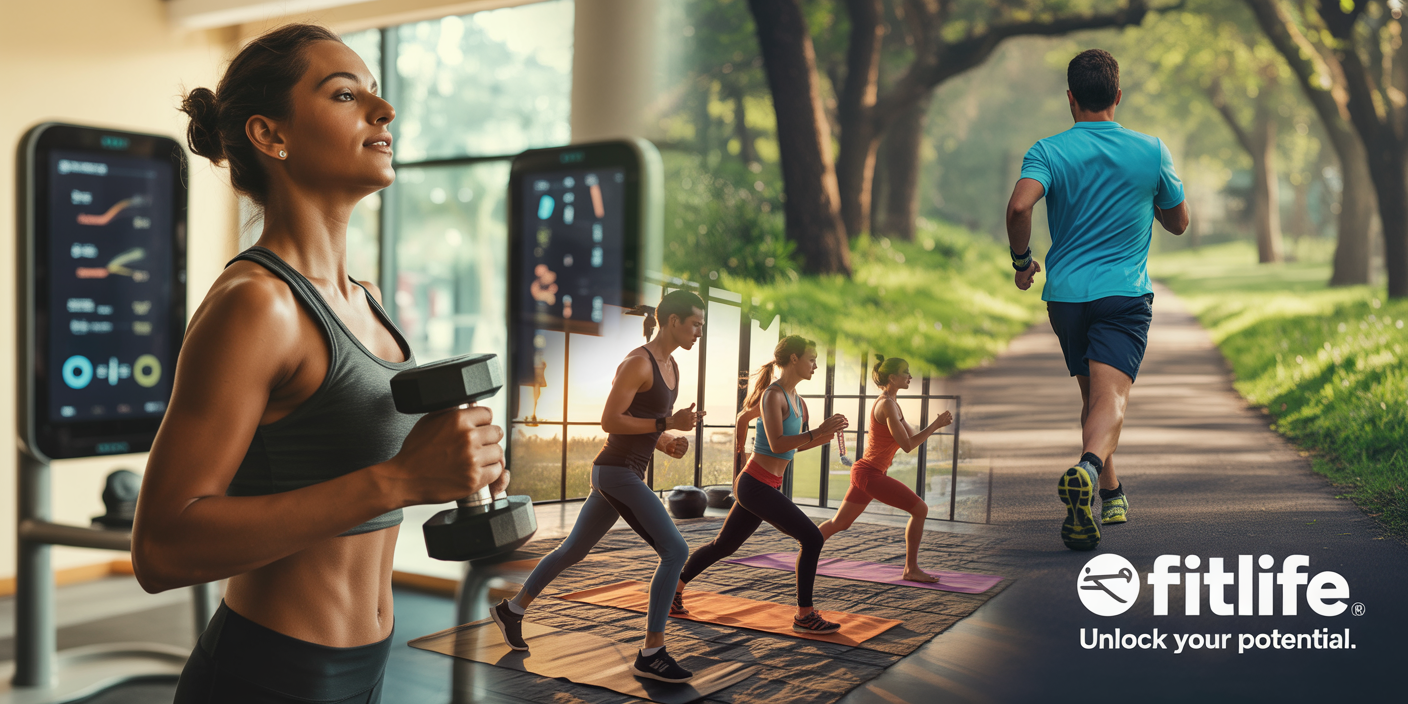As 2025 unfolds, fitness enthusiasts worldwide are embracing new approaches to goal setting, inspired by innovations in technology, training methodologies, and holistic wellness.
Unlike the rigid, weight-centric goals of the past, modern fitness objectives emphasize functional movement, mental health, and long-term sustainability. Whether you’re a seasoned athlete or just starting your fitness journey, here’s how to align your 2025 fitness goals with the latest trends.
1. Shift from Aesthetic to Functional Goals
The traditional focus on aesthetic outcomes (e.g., weight loss, muscle definition) is giving way to goals centered on functional performance and well-being.
Popular Functional Goals for 2025:
- Improving mobility and flexibility for injury prevention
- Enhancing cardiovascular endurance through zone-based training
- Achieving personal records in lifts, runs, or specific movements
- Mastering skills like handstands, muscle-ups, or trail running
Tip: Use apps like WHOOP or Strava to monitor progress beyond mere appearance, focusing instead on health metrics and performance data.
2. Integrate Hybrid Fitness Routines
Hybrid training — combining strength, endurance, and mobility — is a leading trend in 2025.
How to Align:
- Incorporate resistance training twice a week
- Add functional cardio, like HIIT or circuit training
- Prioritize active recovery sessions, such as yoga or mobility drills
New fitness modalities like HYROX and DEKA FIT offer structured hybrid competitions, motivating individuals to train across multiple disciplines.
3. Leverage Technology for Personalized Goals
Advancements in AI-driven fitness coaching are revolutionizing how people set and achieve goals.
Key Tools:
- Wearables that track heart rate variability, sleep, and recovery
- Virtual personal trainers offering adaptive workout programs
- Real-time form correction using augmented reality apps
For example, Brazilian startup GOFIT.AI now offers customized plans based on biometric feedback, helping users avoid injury and optimize progress.
4. Prioritize Mental Health and Recovery
2025 fitness goals increasingly integrate mental wellness with physical training.
How to Align:
- Set goals related to stress reduction, such as establishing a daily meditation practice
- Aim for consistent sleep hygiene, recognizing its role in recovery
- Include breathwork and mindfulness within training routines
The concept of “training less but smarter” is replacing outdated notions of relentless intensity.
5. Participate in Community Fitness Challenges
Fitness is becoming more social and communal in 2025.
How to Align:
- Join local running clubs, CrossFit boxes, or climbing gyms
- Participate in virtual races or global fitness challenges via platforms like Zwift or Nike Run Club
- Attend fitness festivals such as Wodapalooza or Brazil’s Arnold Sports Festival South America
Community participation provides motivation, accountability, and fun, while connecting fitness goals with social interaction.
6. Embrace Sustainable and Eco-Friendly Fitness
With growing awareness of environmental issues, many are setting sustainability-oriented fitness goals.
Examples:
- Cycling or running instead of driving for short commutes
- Using eco-friendly gym gear and biodegradable yoga mats
- Supporting fitness brands with sustainable manufacturing practices
Brazilian company Vivay leads the trend with their recyclable activewear, combining performance with environmental responsibility.
7. Explore Outdoor Fitness Adventures
The “green fitness” movement encourages people to set goals that involve nature-based activities.
Popular Outdoor Goals:
- Completing a trail marathon or mountain ultramarathon
- Mastering rock climbing routes in Brazil’s Serra do Cipó
- Practicing outdoor calisthenics in urban parks
Research shows that outdoor workouts boost mood, motivation, and vitamin D levels.
8. Set Data-Informed Micro-Goals
Large, vague goals often lead to frustration. In 2025, the emphasis is on setting SMART micro-goals (Specific, Measurable, Achievable, Relevant, Time-bound).
Examples:
- Increase squat strength by 10% in 3 months
- Run a 5K under 25 minutes by July
- Improve sleep duration to 7+ hours per night for 30 consecutive days
Breaking down larger goals into manageable steps facilitates consistent progress and positive reinforcement.
9. Align Goals with Holistic Health
Modern fitness is about integrating nutrition, hydration, mental health, and physical training.
How to Align:
- Set nutrition goals like increasing daily fiber intake
- Monitor hydration using apps like Hydro Coach
- Incorporate preventive healthcare check-ups alongside fitness milestones
This 360-degree approach ensures that fitness enhances overall life quality.
10. Stay Flexible and Adaptive
Finally, the key to successful fitness goal setting in 2025 is adaptability.
Life circumstances change, and so should fitness plans. Embrace a growth mindset, allowing for goal adjustments based on:
- Physical feedback (e.g., fatigue, injury risk)
- Lifestyle changes (e.g., travel, work schedule)
- New interests (e.g., discovering a passion for climbing or dance)
Conclusion: Redefining Fitness Success in 2025
Setting fitness goals in 2025 means moving beyond rigid numbers and superficial benchmarks. It’s about pursuing functional health, mental resilience, and sustainable habits that enhance both longevity and quality of life.
By aligning your goals with these emerging trends, you’re not just following a fad — you’re investing in a future where fitness is integrated, personalized, and holistic.
